SPACEPLATES Greenhouse Bristol by N55 + Anne Romme
By Bustler Editors|
Friday, May 25, 2012
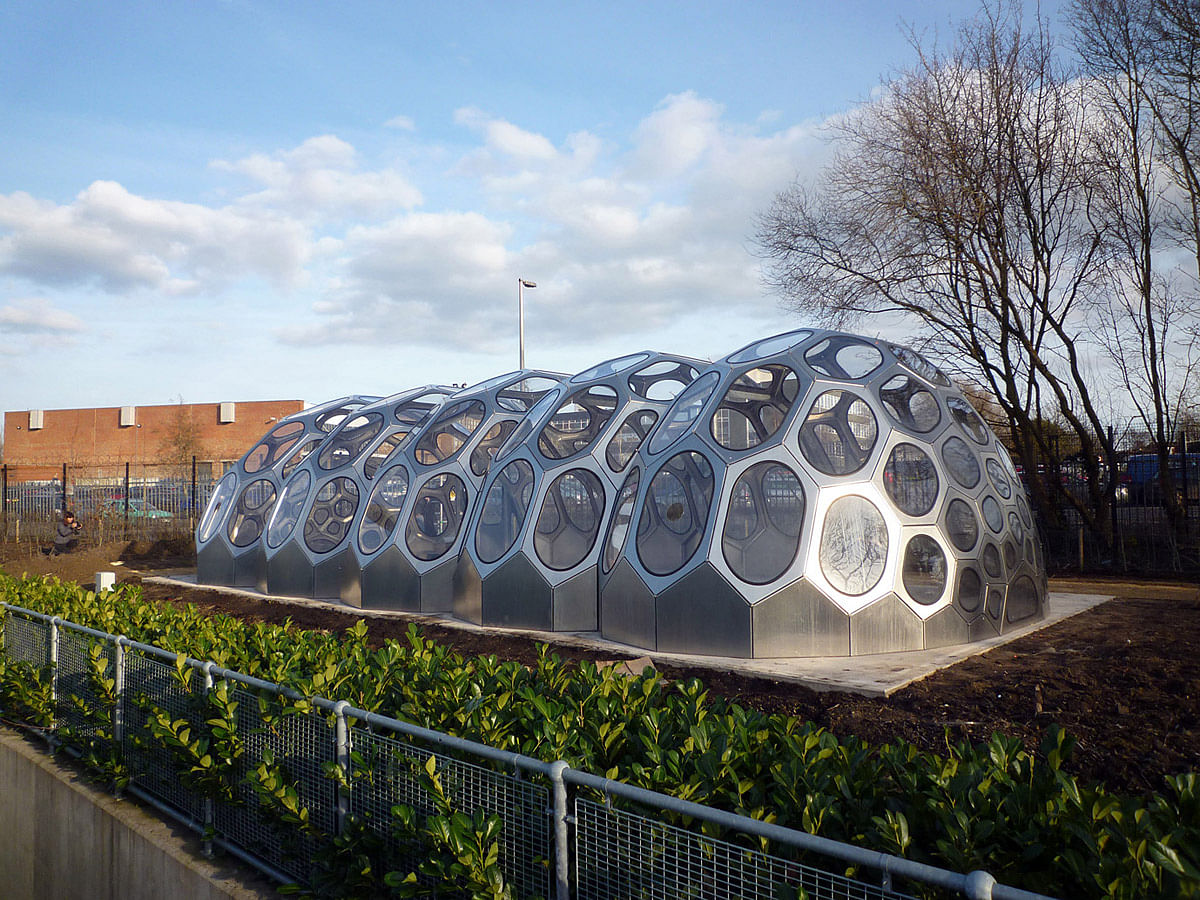
Related
We have received images of the fascinating project, SPACEPLATES Greenhouse Bristol, a class room and growing space for the horticulture students and their teachers at the South Bristol Skills Academy in Bristol, UK. The project is a collaboration of Danish artists' group N55 with Copenhagen architect Anne Romme.
Project Description from the Architects:
THE GREENHOUSE
A greenhouse is a contained quantity of air and light which extends the growing season and enables the thriving of plants otherwise alien to local climate. It creates a bubble of super-nature, where things otherwise impossible become possible. The smell, temperature, humidity and taste of things are significantly different than just outside the thin membrane. It enables us to create different kinds (or quantities) of food, but also to experience different climates and atmospheres. A greenhouse is by definition alien to its site, but creates a significant place in everyday life.
Wedged in on a small piece of land between large parking lots, the SPACEPLATES Greenhouse Bristol functions as a class room and growing space for the horticulture students and their teachers at the South Bristol Skills Academy. The greenhouse enables them to study and grow plants all year round, and will be used for seeding and growing plants for the outdoor gardens adjacent to the site.
The structure is made of 4 mm laser cut aluminum plates, bent at all edges and bolted together. The acrylic windows are mounted with EPDM rubber profiles similar to the profiles used for mounting windows in (mostly older) cars.
The project was completed in 2012 and is situated at the South Bristol Skills Academy, City of Bristol College, Bristol, UK.
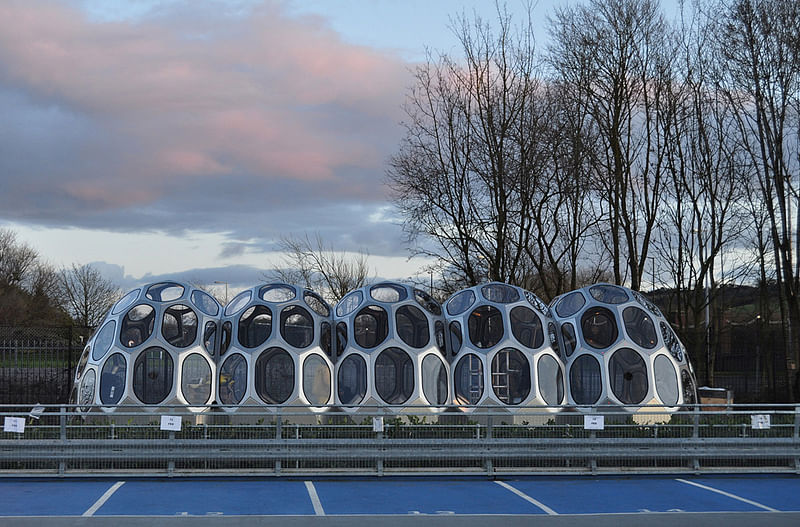
THE BUILDING SYSTEM
The late Danish Engineer Ture Wester identified an unexploited potential in using pure plate structures for constructing doubly curved surfaces of all sizes. This project takes up that challenge. By means of digital design and fabrication, and based on Wester's significant work on the dualistic geometric and structural relationship between lattice and plate structures, N55 in collaboration with Anne Romme have developed a rigid, light weight, self supporting, modular building system. Being a pure plate structure, there are no other structural members than thin plates. No underlying lattice structure and no complicated detailing. The plates have been bent at all edges to achieve a simple, mechanical assembly method. While the design and the production require digital technology, the structure itself can be assembled using only hand tools.

The SPACEPLATES Building System has as its ambition to enable people to build structures for themselves. It is of concern that architecture as a discipline and the building process in particular is increasingly dependent on large-scale economic capacity and advanced technology. While much technology is becoming accessible to a large number of people and is put to use in their everyday life, the act of building a structure for living or working in is for a number of reasons becoming an increasingly inaccessible privilege for most. This project suggests a method for building which potentially could allow for statically well-defined user designed and assembled structures.
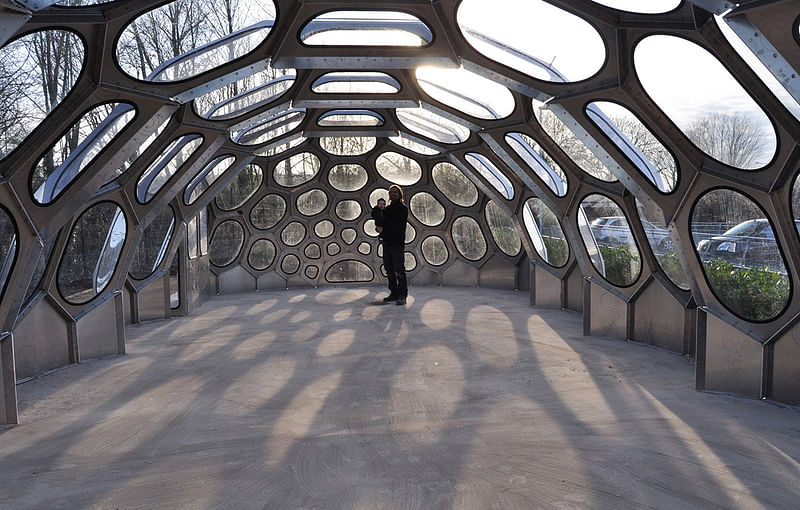
Pure plate structure is an elegant way of creating doubly-curved forms. All structural members are thin plates and their geometric configuration allows for the transmission of both tension and compression forces. Thus, unlike in the lattice structures that are being used in much contemporary architecture, in pure plate structure the structural system and the cladding is one and the same thing. As a result, the climate barrier can be fully integrated into the structural system, and detailing kept at a minimum. Just as in the elegant shell of the sea urchin, pure plate structures are characterized by their relationship between great strength, an extremely thin shell and a large enclosed space.
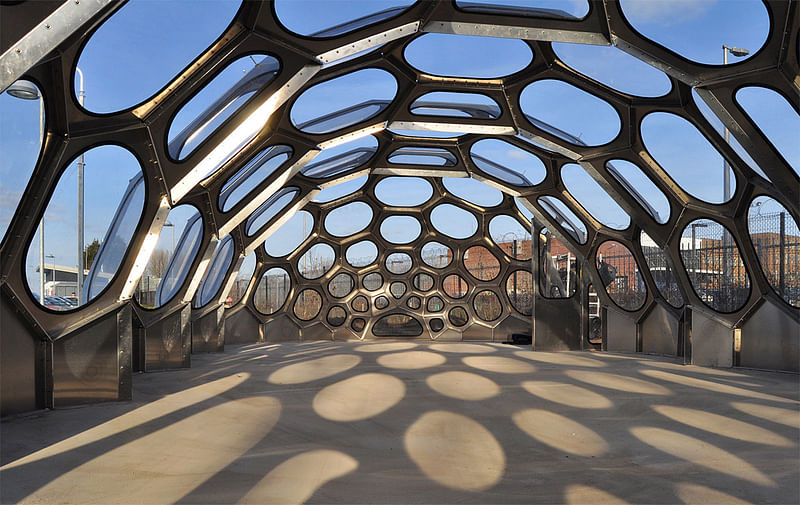
Unlike Bucky Fuller’s well-known and well-tested geodesic domes based on regular polyhedra or Platonic solids where the number of different parts is kept at a minimum, the SPACEPLATES Building System takes advantage of contemporary technology to mimic more complex naturally occurring geometries, such as the sea urchin shell. Because an innate organic growth principle, these often contain a gradient, and thus many geometrically similar but differently sized parts.
The SPACEPLATES Greenhouse Bristol is based on the sea urchin geometry, where hexagons are arranged on a geodesic grid on a sphere. Five spheres intersect each other and form a sequence of spaces.
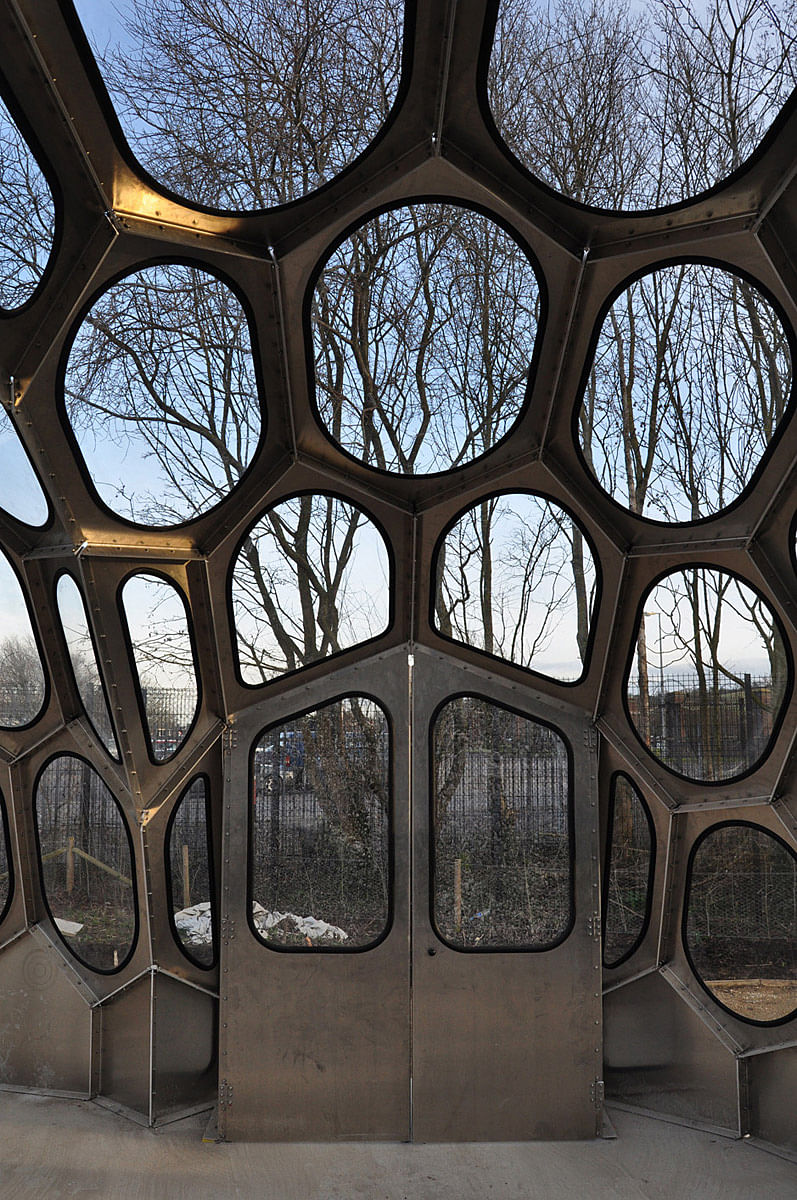
So far the system has been used in a plywood prototype (The Danish Art Workshops, 2010), a polycarbonate prototype (2011, presently at loan to Prags Have, an urban gardening project in Copenhagen) and then in the SPACEPLATES Greenhouse Bristol. The system is currently being developed to include insulated structures (with support from the Danish Arts Foundation). In summer/fall 2012, another SPACEPLATES Greenhouse will be build at Prags Have, Copenhagen.
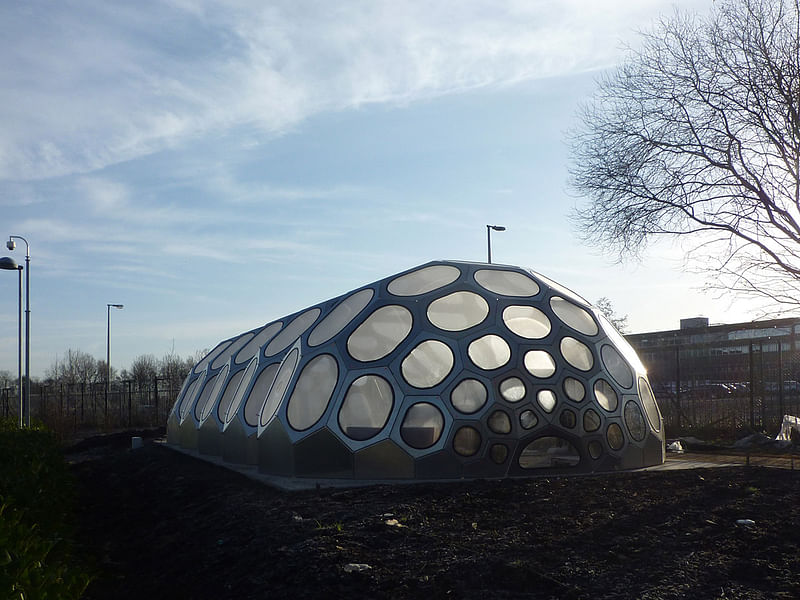
Project Details:
Idea and design: N55 and Anne Romme
Engineer: Anne Bagger M.Sc. Ph.D., Daniel Sang-Hoon Lee, M.Eng, Ph.D
Architecture consultant: Erling Sørvin
Fabrication: Danlaser A/S
Local contractor: Kore Construction Ltd
Project consultancy: Ginkgo Projects
Construction team, Bristol: Till Wolfer, Nico Jungel, Sacsha Pölling
Area: 72 m2
Budget: Appr. £68.000
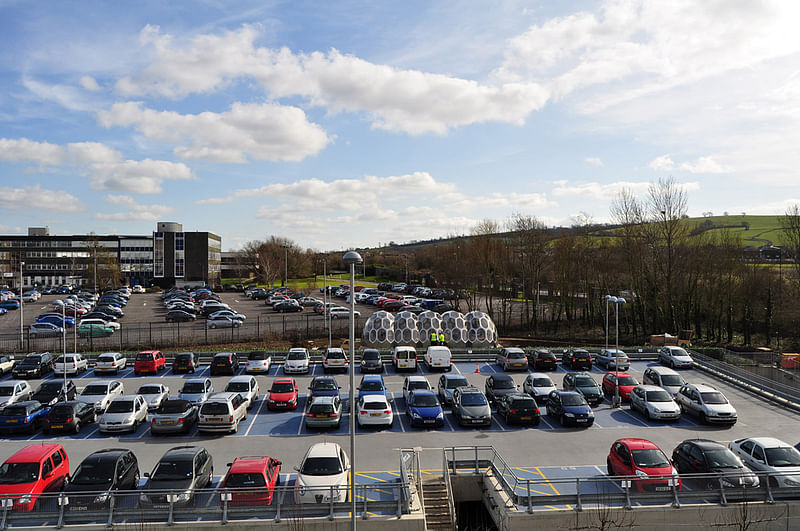
Find also plans and photos of construction details in the image gallery below.
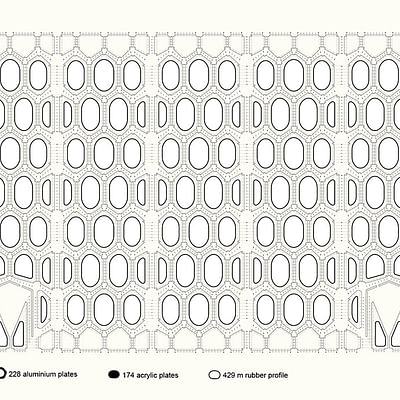
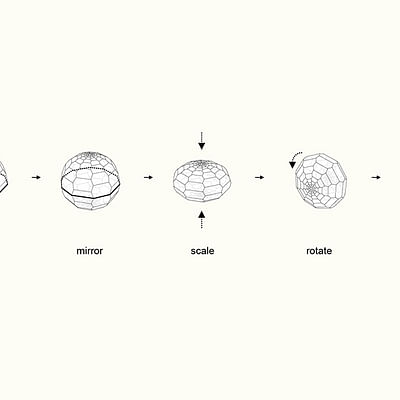
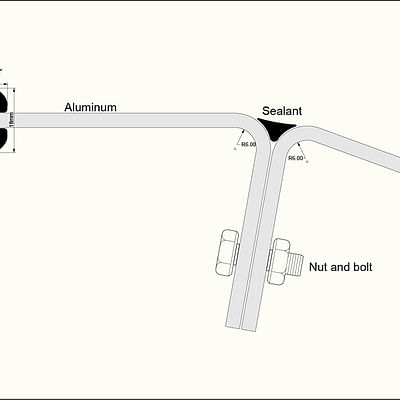
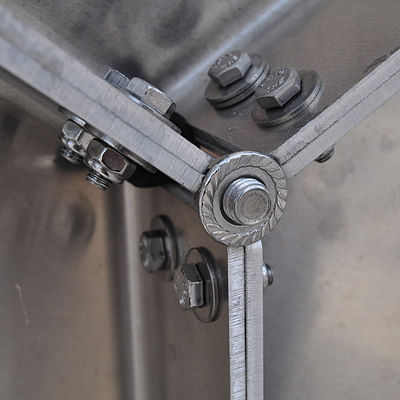


Share
0 Comments
Comment as :